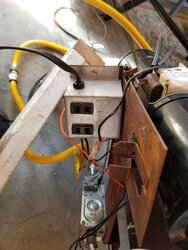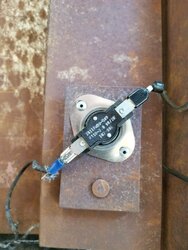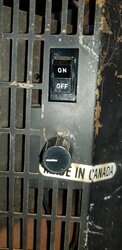I have what looks similar to a Vermont Castings gas fired faux wood stove. It was used, minus manual, and worked well for a year. Then it started to go black inside from soot, and finally would just shut off after about ten minutes. It has a "T" shaped pilot light, the base of the vertical part of the T goes out over the main gas channel, the top of the T goes Left and Right, one to a thermopile (with copper pipe back to regulator) and the other to a thermocouple with two lead electric going to the electric block on the regulator.
Cleaned everything, including the thermcouple/thermopile, but still just shuts off after few minutes.
Any ideas why??
thanks
Cleaned everything, including the thermcouple/thermopile, but still just shuts off after few minutes.
Any ideas why??
thanks


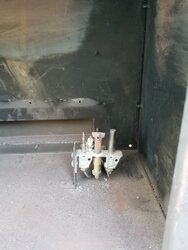
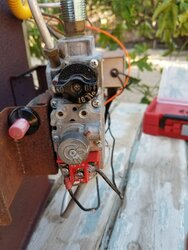
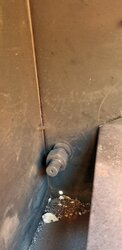
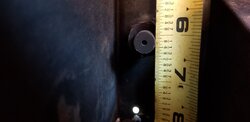
 . Your reading with pilot lit only is the no load voltage being generated by the Thermopile. That current is used to open the burner valve with a electromagnet in the valve, so with it on, you're reading the voltage drop from the current being used through the coil that makes the magnet. (as well as wiring and thermostat if wired to open gas valve) Since the pilot goes out as well, that is the current from the thermocouple that holds the safety valve open when heated by the pilot flame. Make sure when the main burner is lit the pilot is still strong engulfing about the top 1/3 of the thermocouple. A weak pilot can be thrown off course and not continue to heat the thermocouple properly. Voltage generated by thermocouple energizes an electromaget coil that holds the safety open. (what you hold in when lighting until it is generating enough current so the magnet holds it open for you when you let go)
. Your reading with pilot lit only is the no load voltage being generated by the Thermopile. That current is used to open the burner valve with a electromagnet in the valve, so with it on, you're reading the voltage drop from the current being used through the coil that makes the magnet. (as well as wiring and thermostat if wired to open gas valve) Since the pilot goes out as well, that is the current from the thermocouple that holds the safety valve open when heated by the pilot flame. Make sure when the main burner is lit the pilot is still strong engulfing about the top 1/3 of the thermocouple. A weak pilot can be thrown off course and not continue to heat the thermocouple properly. Voltage generated by thermocouple energizes an electromaget coil that holds the safety open. (what you hold in when lighting until it is generating enough current so the magnet holds it open for you when you let go)